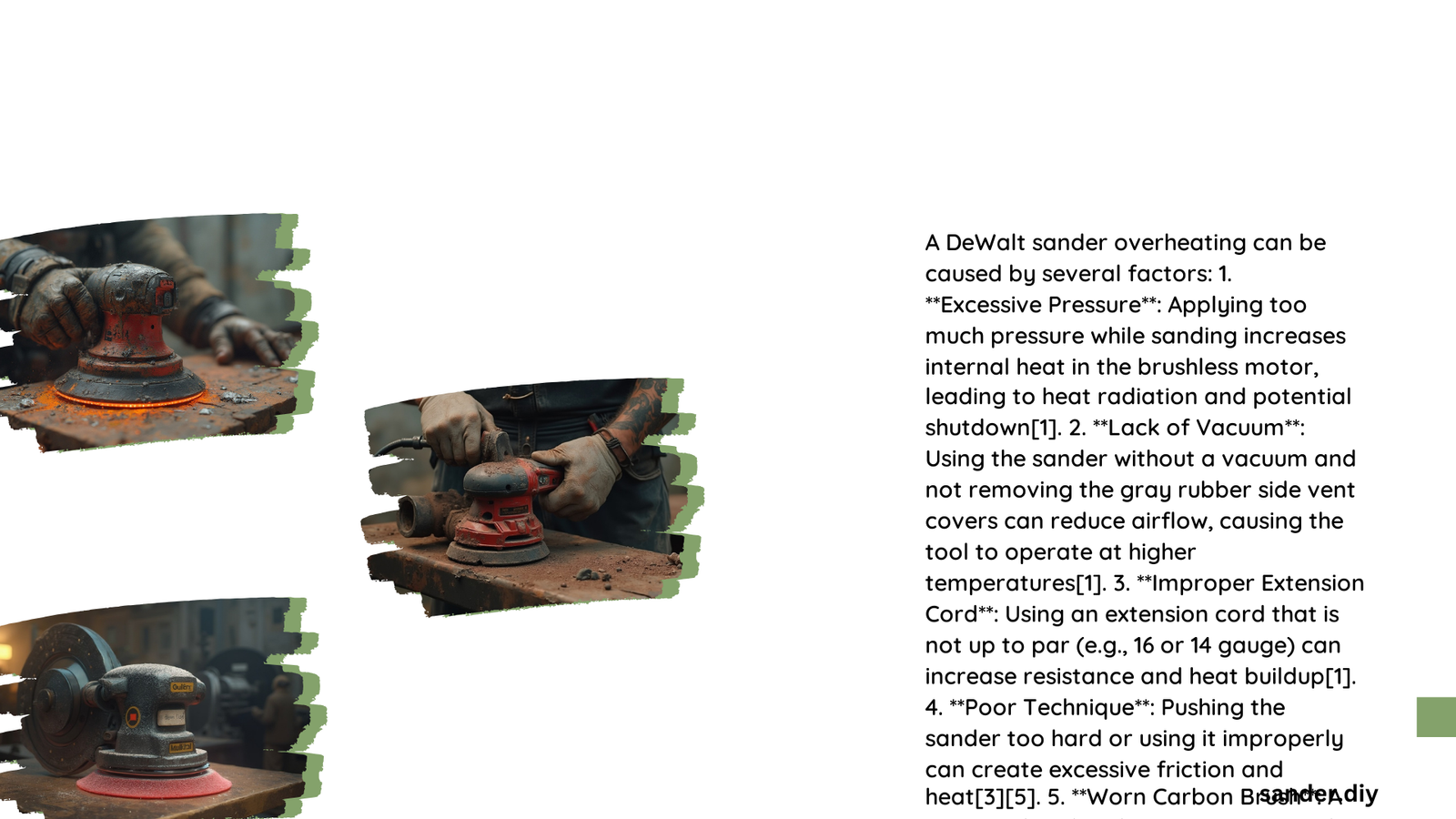Dewalt sanders are powerful woodworking tools, but overheating can significantly impact their performance and longevity. When a Dewalt sander experiences excessive heat buildup, it can lead to motor strain, reduced efficiency, and potential tool damage. Understanding the root causes and implementing strategic solutions is crucial for maintaining optimal tool performance and extending the lifespan of your equipment.
What Causes Dewalt Sander to Overheat?
Motor Stress Factors
Dewalt sander overheating often stems from multiple stress-inducing scenarios:
| Stress Factor | Impact | Prevention Strategy |
|---|---|---|
| Excessive Pressure | Increases internal motor heat | Use tool’s natural weight |
| Incorrect RPM Settings | Reduces motor efficiency | Maintain recommended speed range |
| Dust Accumulation | Blocks ventilation | Regular cleaning |
Critical Overheating Triggers
How Does Downward Pressure Affect Motor Performance?
Applying excessive downward pressure creates significant friction, causing:
– Increased motor temperature
– Reduced sanding efficiency
– Potential long-term motor damage
What Role Does Dust Play in Overheating?
Dust accumulation dramatically impacts sander performance:
– Blocks ventilation ports
– Prevents proper heat dissipation
– Increases internal component temperature
Effective Prevention Strategies

How to Minimize Sander Overheating?
- Proper Technique
- Let sander’s weight do the work
- Maintain consistent, moderate pressure
-
Use appropriate sanding speed
-
Regular Maintenance
- Clean vents using compressed air
- Inspect carbon brushes
- Replace worn components promptly
Recommended Cooling Practices
- Allow 10-15 minute cooling periods between extended use
- Store in well-ventilated area
- Avoid continuous high-intensity sanding
Advanced Troubleshooting Techniques
When Should You Replace Components?
| Component | Replacement Indicators | Estimated Cost |
|---|---|---|
| Carbon Brushes | Visible wear, reduced performance | $10-$20 |
| Power Cord | Fraying, exposed wires | $15-$30 |
| Sanding Pad | Uneven wear, reduced grip | $5-$25 |
Diagnostic Checklist
- Verify electrical connections
- Check for obstructed ventilation
- Measure motor RPM performance
- Assess sandpaper condition
Professional Maintenance Tips
How to Extend Sander Lifespan?
- Use manufacturer-recommended accessories
- Follow prescribed maintenance schedule
- Store in dry, dust-free environment
- Use appropriate sanding techniques
Technical Recommendations
- Maintain optimal RPM (typically 10,000)
- Use correct abrasive grit
- Implement periodic professional servicing
Warning Signs of Potential Failure
- Unusual burning smell
- Reduced sanding efficiency
- Inconsistent motor performance
- Excessive heat generation
Final Recommendations
Proactive maintenance and understanding your Dewalt sander’s operational limits are key to preventing overheating. Regular inspection, proper technique, and timely component replacement will ensure long-term tool reliability.
